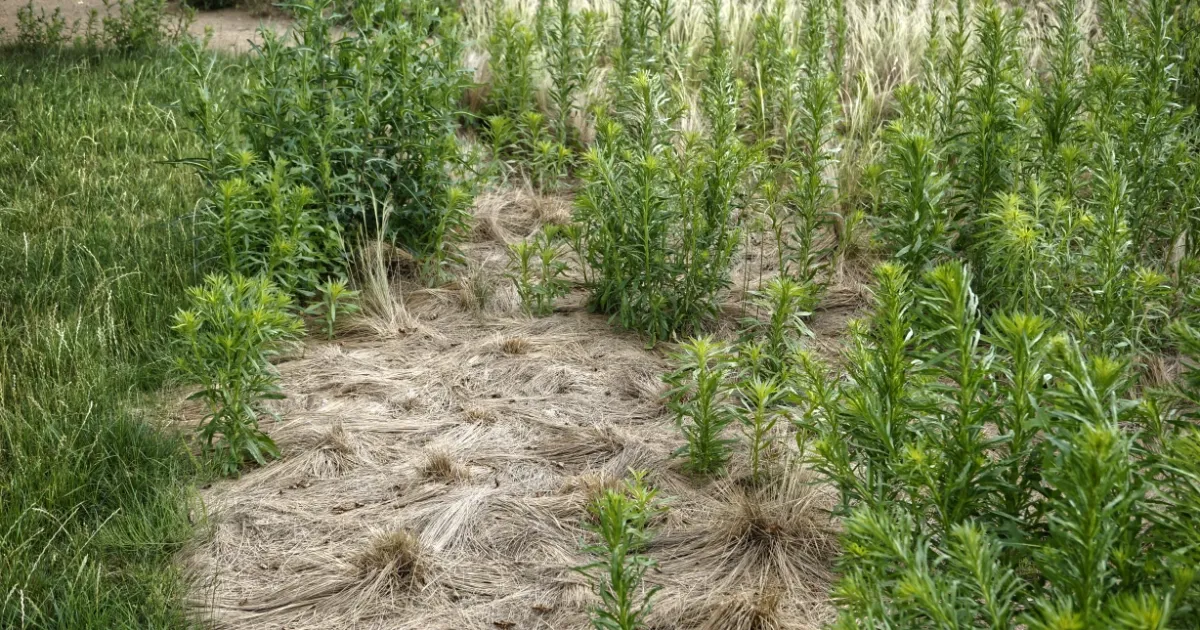
Managing Flaxleaf Fleabane
(Conyza bonariensis)
Learn how to effectively control Flaxleaf Fleabane, a weed taking over Australian bushland and yards. Understand its characteristics, impact, and management strategies.
Flaxleaf Fleabane is a persistent weed increasingly invading native bushland and residential areas, particularly in housing development sites. Understanding its nature and implementing effective control measures are essential to combat its spread.
Characteristics and Identification
Flaxleaf Fleabane is an erect, annual herb that can grow up to a metre tall. Originally from South America, this weed is part of the daisy family (Asteraceae) and produces fluffy, white flowers throughout the year. Its lightweight seeds are quickly dispersed by the wind and can germinate under light stimulation. The weed’s candelabra-like shape, with stems branching below each cluster of flowers, makes it identifiable.
It primarily emerges from the soil surface or shallow depths of up to 0.5 cm. Though herbicide resistance has been observed in other parts of the world, there are no verified cases of glyphosate resistance in Western Australia as of now.
Impact on Bushland
Flaxleaf Fleabane thrives in disturbed areas and is often found in bushland near cultivated land, along roadsides, and in waste spaces. It does not generally compete well in areas with dense plant cover, relying instead on disturbances to become established. For this reason, the weed can significantly disrupt the natural balance of Australian bushland by taking over areas that experience human activity or soil disruption.
Management Strategies
Hand Removal
Flaxleaf Fleabane can be manually removed at any time of the year, although removal is most effective during the cooler months of winter and early spring. Hand weeding should target small or isolated infestations and focus on uprooting plants before they produce seeds. Be aware that the weed can resprout from basal buds after its top is removed, so ensure thorough removal.
Herbicide Application
Herbicide treatment requires careful timing for maximum effectiveness. Flaxleaf Fleabane is most susceptible to glyphosate during the rosette stage, with plants less than 10 cm in diameter. Apply a glyphosate solution of 25 ml/10 L at this stage, ensuring the plants are actively growing. For more mature plants, wiping the stems with 50% glyphosate can be considered. Spraying is most effective during June, July, August, and September.
Always read the manufacturer's instructions and safety data sheets before applying herbicides to ensure safe and correct usage.
Importance of Early Removal
Removing Flaxleaf Fleabane early, especially before it flowers, is crucial to reducing its spread. Left unchecked, its seeds can disperse across long distances, establishing new growth and making control even more challenging. Planning and consistent action will help minimise its impact on native bushlands and private properties alike.
By prioritising early intervention and employing a combination of manual and chemical management techniques, Flaxleaf Fleabane can be controlled effectively. Taking these steps ensures the protection of Australian bushland and the preservation of native ecosystems.
24 Jun 2025


